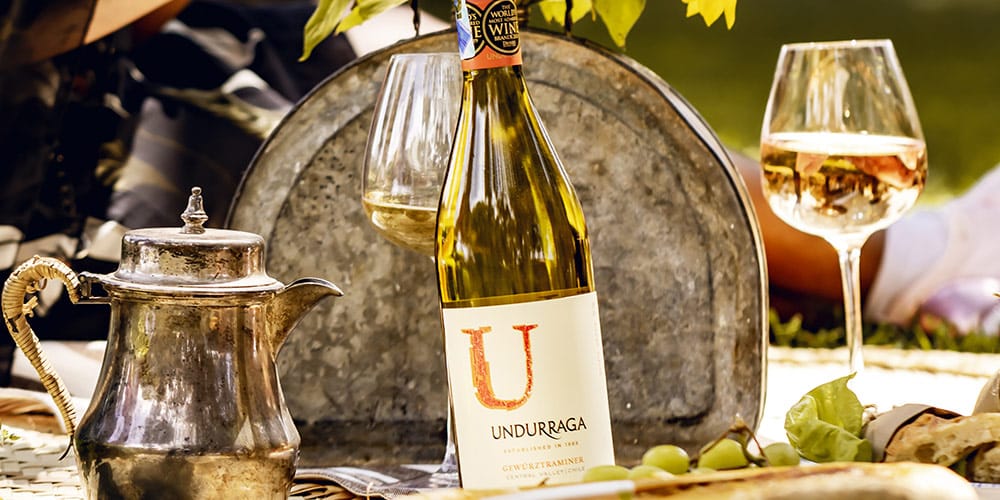Why do aromas and flavours other than grapes appear in wine?

Whenever you read a description of a wine, how often does it mention the aromas and flavours in wine? Wine tasting notes often describe markedly different smells and tastes, as diverse as cherry, cut grass, pineapple and smoke, to name a few. But how can this be, when the wine is made from just grapes, with no other fruit or flavourings added?
Wine chemistry
The simple answer is that the winemaking process causes changes in the grape juice, giving rise to different aromatic compounds.
All fruit, including grapes, contains aroma molecules. Although we can smell the aroma of raw grapes, there are also other aromatic molecules present. However, these are bound up with the sugar in the grapes, and have little or no aroma in this state. But when the grape juice ferments, the yeast consumes the sugar to produce alcohol. This releases more aroma compounds which you can then smell.
The reason some of these aroma compounds smell familiar is that we also find them elsewhere in nature.
Hang on, this is just aromas – what about flavours?
It may be useful at this point to say a little about how we perceive aromas and flavours.
Our noses are pretty sensitive, able to identify hundreds (if not thousands) of different aromas. Our tongues, on the other hand, really only identify sweet, sour, bitter, salt and umami (savoury).
All the other flavours we perceive arise from a combination of our senses of smell and taste. Aromas waft round our nasal cavities as we eat and drink, firing our olfactory receptors and allowing us to perceive and distinguish such flavours as white pepper, mushroom or fresh orange, to name just a few.
Aromatic compounds found in wine
The complex aromas and flavours we experience when we taste wine are down to natural aromatic chemical compounds. These can be present right from the start, in the grapes themselves, or develop over time through the winemaking process.
Many of these compounds are also found in the flowers, fruits and leaves of other plants. Terpenes, for example, are responsible for many floral, vegetal and fruit aromas including rose petals, lychee, lemon peel, eucalyptus, rosemary and peppercorns.
Some are present on the grape skins, such as methoxypyrazines, which give the aromas of tomato leaf, green capsicum, asparagus and earth.
The fermentation process produces compounds which include the esters that give rise to fruit aromas such as apple, banana and strawberry.
Yet more chemical changes take place in the wine during aging, resulting in further compounds – including aldehydes smelling of caramel, vanilla and nuts.
This is just the tip of the iceberg. There are reckoned to be up to 1,000 aromatic compounds present in wine!
The winemaker’s influence
Winemakers use a range of tools to influence the smell and taste of the wine, other than the grape variety. The various techniques used in wine production all factor into the final aroma profile. Professional wine tasters break this down into primary, secondary and tertiary aromas, depending on the point in the winemaking process at which they arise.
Primary aromas come from the grape variety itself, for example the characteristic lychee smell of gewurztraminer. The aromas produced can be influenced by climate and harvest date.
Secondary aromas arise from the vinification process, including the temperature of fermentation, strains of yeast used, amount of grape skin contact, and whether oak barrels are used. For example, using new oak barrels may impart notes of vanilla to the wine.
Tertiary aromas develop over time as wines undergo aging and maturation. Aging in oak allows slow penetration of oxygen into the wine; this causes chemical changes which modify the initial aromas and allow new scents and flavours to develop, such as “forest floor” or “cigar box”.
Wine chemistry = wine magic
Lots of factors come together in the winemaking process to produce a wine brimming with interesting and identifiable aromas and flavours. And one wine may taste quite different to a comparable wine made at the next door winery.
In addition, our experience of wine is subjective, because of our individual sensitivities to certain aromatic compounds. I might identify cherries as a dominant flavour in a pinot noir and you might think it tastes of wet earth. We all bring our own experience to bear when we think about the wine in our glass.
At the end of the day, how we experience wine is as individualistic as we are – and it’s simply magical!

